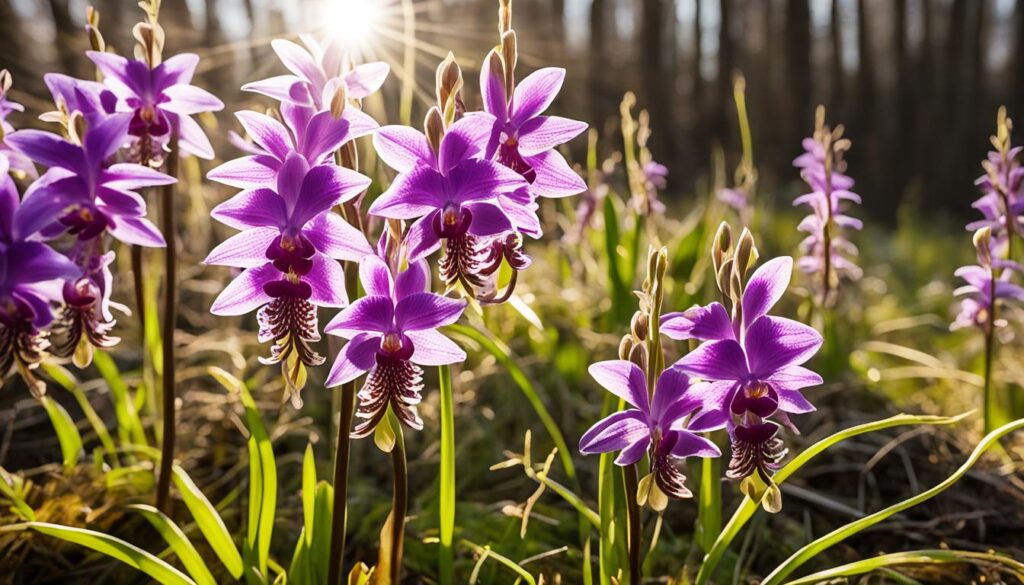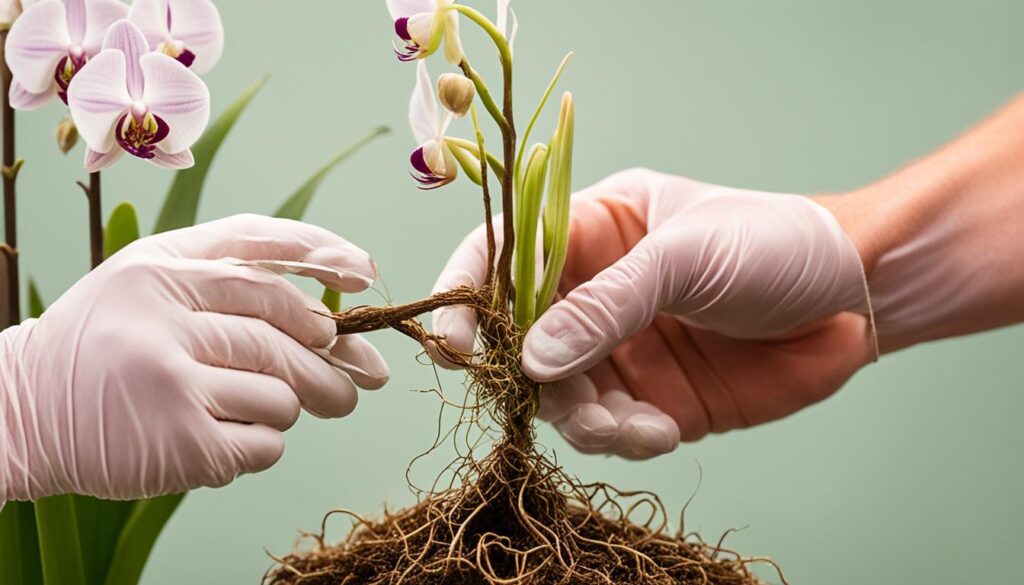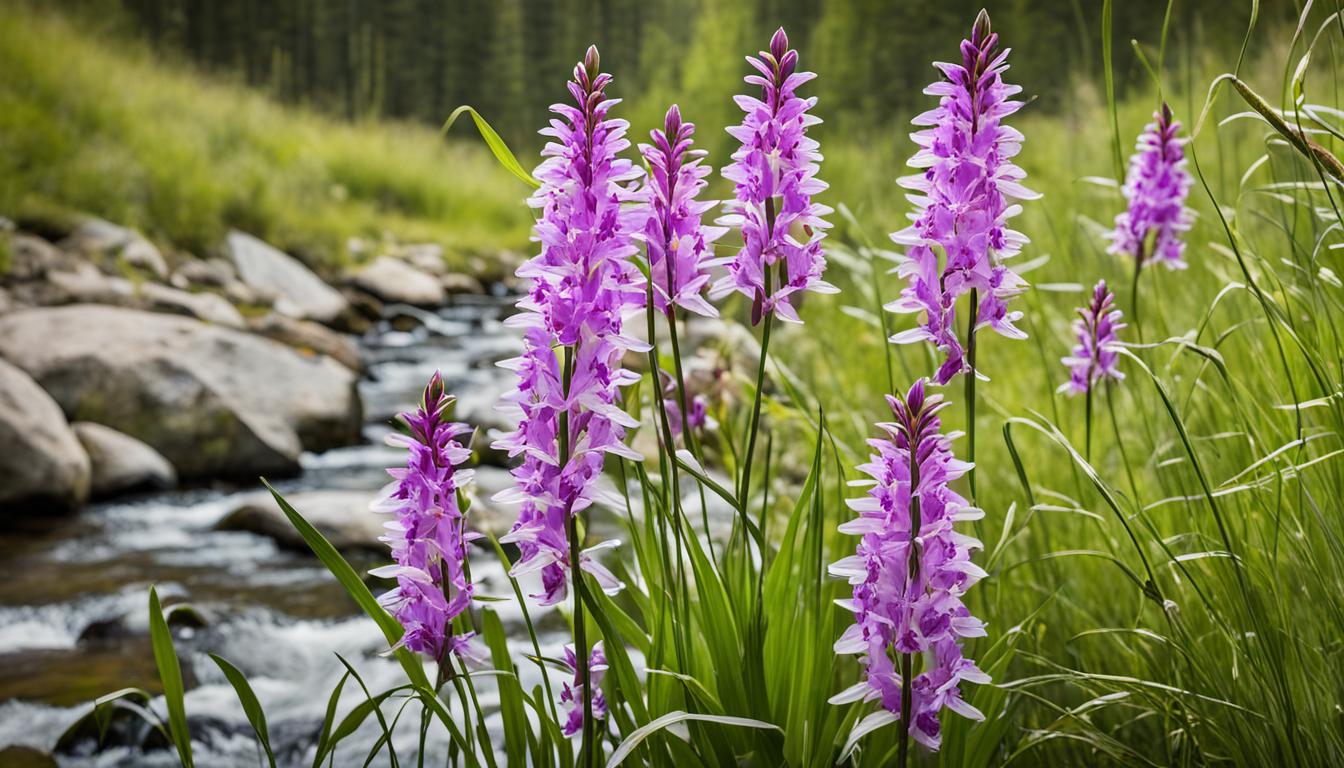Can you believe that some of the rarest flowers on earth are probably blooming in a meadow near you? (if you live in the UK)
Yep, it’s true. The Dactylorhiza orchids, a native orchid species, can be found sprinkled like hidden gems throughout wildflower fields and they are as rare as they are stunning.
Quick Facts
| Characteristic | Detail |
|---|---|
| Countries of Origin | Europe, North Africa, Asia; widespread in temperate and subarctic regions |
| Colors | Pink, purple, white, and occasionally yellow, often with spotted or marked lips |
| Size | Medium; foliage height ranges from 15 to 60 cm, with flower spikes extending higher |
| Difficulty To Grow | Moderate to difficult in garden settings due to specific soil and moisture requirements |
| Bloom Season | Late spring to early summer |
| Light Requirements | Prefers full sun to partial shade; tolerates a range of light conditions but blooms best in good light |
| Watering Needs | Requires moist but well-drained soil; does not tolerate drought well |
| Temperature Range | Cool to temperate; not suited to tropical climates |
| Potting Medium | In gardens, prefers rich, loamy soil with good drainage; not typically grown in pots |
| Propagation Methods | Division of tubers or from seed, though seed-grown plants may take several years to flower |
| Common Pests and Diseases | Slugs and snails; fungal diseases such as root rot in overly wet conditions |
| Fragrance | Some species are lightly fragrant |
| Lifespan/Longevity | Perennial; can live for several years in the wild or garden, with care |
| Conservation Status | Some species are considered rare or threatened due to habitat loss and over-collection |
| Unique Features | Notable for their terrestrial habitat and tuberous roots, as well as the strikingly marked flowers |
Now, I’ve always been amazed by these wild beauties, so much so that I’ve spent many days with the Lincolnshire Wildlife Trust just waiting for them to pop up.
And when they do, they’re not shy about it. These orchids burst onto the scene, demanding to be seen and stealing the show with their vivid colors and intricate patterns.
Now, let’s talk about caring for these beauties. Dactylorhiza care might seem daunting, but I’ll let you in on all the secrets.
So grab your gardening gloves and a camera, we’re about to get up close with nature’s finest work.
Key Takeaways
- Discover the rare and captivating Dactylorhiza orchids in their natural meadow habitats.
- Learn essential orchid care tips to nurture these native orchid species.
- Understanding the propagation of Dactylorhiza is key to growing these orchids successfully indoors.
- Get the scoop on creating your own orchid garden with techniques that cater to both dactylorhiza care and hybrid varieties.
- Find out how a love for photography can intertwine with the passion for preserving these delicate wild orchids.
Discovering Dactylorhiza Orchids in Wild British Meadows
Exploring the depths of Lincolnshire’s wild meadows introduces one to the stunning variety of Dactylorhiza orchids.
These rare orchids, a quintessential part of British flora, are as captivating as they are varied. Their presence in the damp marshlands of Lincolnshire Wildlife Reserves speaks to the richness of the UK’s native orchid species.
The allure of native orchid species in Lincolnshire
It’s an exhilarating experience when you first spot a Southern Marsh Orchid amidst the verdant landscapes.
With an attraction almost mystical, these native orchid species have a uniqueness that commands attention, drawing both the casual onlooker and the avid orchid photographer alike.
Southern Marsh Orchid: A common beauty in wetlands
The Southern Marsh Orchid, a gem among the Lincolnshire meadows, seems to flourish best in the wettest of its natural habitats.
| Orchid Variety | Color Variation | Preferred Habitat |
|---|---|---|
| Southern Marsh Orchid | Deep pink to purple | Wet marshlands |
| Early Marsh Orchid | Pale pink | Damp meadows |
| Common Spotted Orchid | Light pink with spots | Grasslands and woodlands |
By highlighting the diversity and splendor of the Dactylorhiza orchids, I’m reminded why these rare species deserve our utmost admiration and protection.
Dactylorhiza Orchids and Their Unique Propagation Cycle
Have you ever wondered about the unique life cycle of Dactylorhiza orchids? These rare orchids are a marvel of nature with a propagation process that’s as intricate as it is fascinating.
A friend once showed me how their Dactylorhiza fuchsii, a lovely native orchid species, thrived for years on a mere slab of turf, undisturbed and patiently waiting to be planted in their destined natural environment.

When autumn arrives, the life cycle of these plants reaches a pinnacle. It’s then that they release their fine, dust-like seeds into the breeze, sending them off on a hopeful journey to find a new cradle in the wild.
The secret to their successful germination lies beneath the soil’s surface, where a special type of fungi awaits to form a symbiotic relationship with the seeds.
It’s a delicate ecological dance, essential for the growth of these native orchid species.
Patience and precision are key when it comes to the propagation of Dactylorhiza.
It’s not just about planting a seed; it’s about fostering and sustaining a partnership with their mycorrhizal allies.
This relationship is crucial, as, without it, the seeds may never develop into the rare, stunning plants we cherish.
To aid those interested in cultivating these beauties, allow me to offer a few orchid care tips:
- Know your orchid: Be aware that these are specialized plants with needs different from the typical houseplant. Research and understand their life cycle for better care.
- Patient propagation: If you’re trying to grow these orchids, mimic their natural environment as much as possible and give them plenty of time to establish their crucial fungal relationships.
- Mind their medium: These orchids are accustomed to certain soil types. Ensure you have the right setup that facilitates their growth.
Whether you’re an orchid enthusiast or simply appreciate the wild splendor of Dactylorhiza orchids, respecting their slow dance of growth and reproduction can bring the unique wonder of these rare orchids into your life.
It’s an art of harmony and understanding, one that brings rewards in brilliant blooms and a deeper connection with the wonders of nature.
Growing and Caring for Dactylorhiza Orchids at Home
Cultivating Dactylorhiza orchids is an endeavor of patience and precision.
As a keen gardener, I have found that creating the right environment for growing orchids indoors can lead to flourishing plants that offer a slice of wild beauty in your own living space.
Let’s delve into some orchid care tips to ensure your indoor garden blooms with vivid colors of these rare and native orchid species.
Orchid care tips: Fostering healthy growth indoors
For those new to orchid gardening techniques, maintaining the delicate balance of moisture, light, and temperature is crucial.
Unlike typical houseplants, orchids require a more attentive approach to replicate their natural, often tropical, habitats.
A consistent watering schedule, indirect but bright light, and stable temperatures will set the foundation for a thriving orchid garden indoors.

Introduction to propagation of dactylorhiza
In my journey with dactylorhiza care, I’ve learned that successful propagation often hinges on the delicate relationship between the orchid seeds and soil fungi.
To initiate the propagation of dactylorhiza, you need to recreate this symbiotic interaction within your growth medium, a task that requires close observation and a gentle touch to encourage seed germination.
Utilizing poor soil for a backyard meadow of orchids
Believe it or not, a poor soil composition can be an unexpected ally in nurturing a garden filled with dactylorhiza hybrid varieties and rare orchids.
By emulating their favorable conditions and mixing in companion plants like cowslips, you can simulate a micro-meadow in your backyard, inviting these vibrant orchids to bloom amidst a naturalistic setting.
- Mimic natural light conditions with grow lights or well-placed windows
- Ensure accurate moisture levels with a humidity tray or room humidifier
- Maintain a temperature range between 60°F and 70°F for optimal growth
Adhering to these guidelines will not only help you conserve these rare orchids, but also allow you to observe the splendid outcomes of your gardening efforts right at home.
Conclusion
The journey through the world of Dactylorhiza orchids has been as thrilling as it is rewarding.
Learning about the propagation of Dactylorhiza and the patience required to grow these orchids indoors has shown me the intricate balance of nature’s systems.
It’s a delicate dance of mutual reliance, and knowing how to navigate this cycle is crucial for anyone wanting to create a haven for these plants.
By applying the orchid care tips I’ve shared, anyone with a love for greenery can foster dactylorhiza hybrid varieties and other native species right in their own garden, using smart orchid gardening techniques to mimic their natural habitats.
Whether you’re intent on capturing stunning images or practicing dactylorhiza care to grow a vibrant meadow of your own, the key is to always respect these plants’ natural environments.
Dedication, the right environment, and a touch of love are all it takes to make these rare orchids a delightful aspect of your nature-focused sanctuary. So here’s to bringing a little bit of the wild into our lives, one orchid at a time.


Leave a Reply